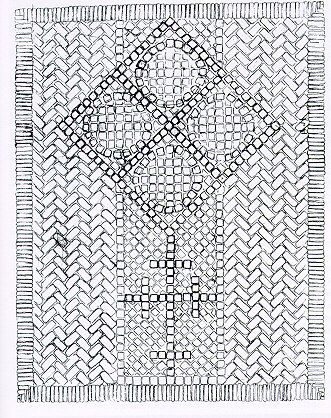The history of the Cistercians and Aduard Abbey
Old documents reveal that our forefathers initially had the intention to preserve the abbey cathedral, because they valued is as a monument. What made them change their minds later on remains in the dark, the magnificent cathedral was broken down very soon after 1600.
So what the inhabitants of the village Aduard nowadays call the 'abbey church' was not the cathedral. It is the original monks' infirmary built in 1297, which became the place of worship for the Protestant villagers. It is also a very fine specimen of late medieval Dutch architecture in brick building showing a wide variety of ornamental brick patterns. The original Cistercian tile floor discovered in the 1920s is very rare.
 |
Figure 4:
Drawing of the tile floor |
The monks of Aduard were more or less compelled to control water level in the many rivers that meandered along the abbey walls towards the sea. They silted up regularly and therefore made life hazardous in this area that mainly consisted of tidal marshes. By adjusting water streams and the placing of sluices the monks proved themselves to be great engineers. The reclamation of land that follows turned out to be a profitable enterprise giving them a financial basis to start many a successful commercial project.
In the 14th century they dug a canal which gave them the opportunity to sail down to Germany to maintain trade relations. At the place where this canal - called 'Aduarderdiep'- crossed an important traffic route the monks constructed an arched bridge. The bridge is still there and it has been listed as a historic monument.




